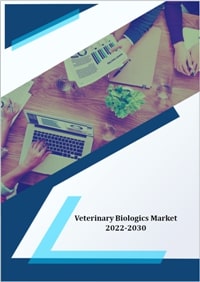
The veterinary biologics market is set to reach from US$ 21,953.8 Mn in 2021 to US$ 36,836.5 Mn by 2030 at a compound annual growth rate (CAGR) of 6.0% during the forecast period from 2023 to 2030. Veterinary biologics are medicinal products obtained from living organism and biological processes. They are employed in veterinary health science to diagnose, prevent and treat animal disease through immune-modulation. According to United States Department of Agriculture (USDA), over the span of 70 years there has been a significant growth in the veterinary biologics market, wherein today approximately 2000 licensed biological products are employed to treat 200 different types of disease in 35 animal species.
"Rising prevalence of zoonotic diseases and technological development in vaccine production by recombinant DNA technology drive the vaccines market growth"
Vaccines are currently leading the product segment for veterinary biologics market. The major factors contributing to its culminating growth are rising prevalence of zoonotic disease and technological innovation in veterinary vaccines production employing the recombinant DNA technology. Molecular diagnostic kits holds the second largest market in the products segment on account of increasing prevalence of contagious disease in poultry, bovine and porcine animal species. Nutritional and hormonal supplement will be the fastest growing market on account of increasing demand for dairy and meat industry and growing important of probiotics to improve animal feed products quality.
"Proactive government policies focusing on long term sustainable development and improving livestock health drive the production animal market growth"
Currently production animals are reigning the animal type segment pertaining to veterinary biologics market. Proactive government policies throughout the globe are focusing on long term sustainable growth by ensuring total food security and improving livestock healthcare. According to the research findings of Food and Agriculture Organization (FAO), animal based food products accounts for one third of human protein consumption. Rampant growth in dairy industry further propels the production animal market growth. Companion animals will be the fastest growing animal type segment in the near future due to significant growth in pet adoption and stringent government norms for mandatory vaccination of pet animals.
"Existence of highly developed agrobased industry and rampant growth in animal husbandry department drive the market growth in North America"
In the present scenario North America accounts for 40% of the global market share in veterinary biologics market. The key factors responsible for the dominance of North America are presence of highly developed agrobased industry and rapid growth in animal husbandry department. Rising public animal health awareness and significant growth in pet adoption further fortify the veterinary biologics market growth in North America. Europe represents 31% market share and is the second largest regional segment for veterinary biologics market. Increasing growth in dairy and meat industry and stringent regulatory norms imposed by healthcare agencies for compulsory vaccination of animals propels the market growth in European region. Asia Pacific holds 17% market share and will be the fastest growing market during the forecast period from 2023 to 2030. Rising prevalence of zoonotic disease and proactive government policies to financially support veterinary departments consolidate the veterinary biologics market growth in Asia Pacific region. Latin America and Middle East & Africa serve as a potential market for major players to promote business expansion and capture the untapped market in rural areas.
Biopharmaceutical companies actively participating in veterinary biologics market are Boehringer Ingelheim Animal Health GmbH, Ceva Sante Animale, Evonik Industries AG, Heska Corporation, Intervet, Inc., INDICAL Bioscience, IDEXX Laboratories, Inc., Virbac, Inc., VCA, Inc. and Zoetis.
Historical & Forecast Period
This study report represents analysis of each segment from 2022 to 2032 considering 2023 as the base year. Compounded Annual Growth Rate (CAGR) for each of the respective segments estimated for the forecast period of 2024 to 2032.
The current report comprises of quantitative market estimations for each micro market for every geographical region and qualitative market analysis such as micro and macro environment analysis, market trends, competitive intelligence, segment analysis, porters five force model, top winning strategies, top investment markets, emerging trends and technological analysis, case studies, strategic conclusions and recommendations and other key market insights.
Research Methodology
The complete research study was conducted in three phases, namely: secondary research, primary research, and expert panel review. key data point that enables the estimation of Veterinary Biologics market are as follows:
Market forecast was performed through proprietary software that analyzes various qualitative and quantitative factors. Growth rate and CAGR were estimated through intensive secondary and primary research. Data triangulation across various data points provides accuracy across various analyzed market segments in the report. Application of both top down and bottom-up approach for validation of market estimation assures logical, methodical and mathematical consistency of the quantitative data.
| ATTRIBUTE | DETAILS |
|---|---|
| Research Period | 2022-2032 |
| Base Year | 2023 |
| Forecast Period | 2024-2032 |
| Historical Year | 2022 |
| Unit | USD Million |
| Segmentation | |
Product
| |
Type
| |
|
Region Segment (2022-2032; US$ Million)
|
Key questions answered in this report